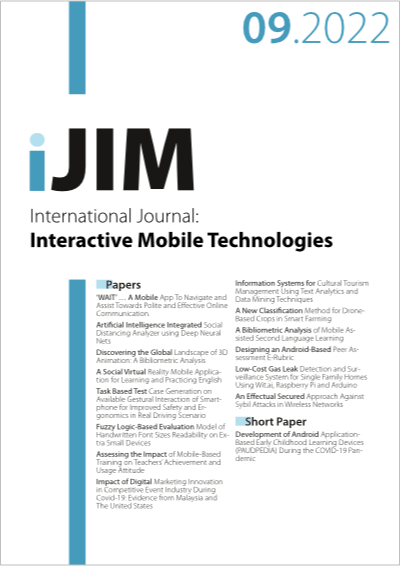Fuzzy Logic-Based Evaluation Model of Handwritten Font Sizes Readability on Extra Small Devices
DOI:
https://doi.org/10.3991/ijim.v16i09.31135Keywords:
artificial intelligence, responsive web, mobile pohones, letter cut, variable fontAbstract
Handwritten fonts are appealing to designers, but their application in web design can cause a readability problems. Different handwritten letter cuts in different font sizes are not equally readable on all screen types. The problem often occurs on extra small devices such as mobile phones. Therefore, it is necessary to choose the combination of the font type and appropriate font size that will ensure responsiveness and be readable on different devices, especially the small ones. For this purpose, a study of readability of monoline handwritten font in seven letter cuts (thin, ultra-light, light, regular, semi-bold, bold, and ultra-bold) in several font sizes was conducted. Variable font was used because it contains all style versions of one typeface family, as opposed to standard font families that use different files for each style version. Also, variable font is suitable for use on web because one file with all the necessary typeface styles is significantly smaller in size than classic families with multiple files which shortens the font loading time. Furthermore, model of readability evaluation using the fuzzy logic based postprocessing method for segmentation values related to evaluation criteria is proposed. Prototype of a variable handwritten fonts are tested in responsive web environment, using CSS technology. The results show that handwritten font size readability evaluation has measurable output because the score combine various numeral factors affecting the readability of particular font size in several letter cuts. Using of proposed model in short time can show readability level of some font type in some font size on a new responsive web suitable for different screen sizes, including extra small devices.
Downloads
Published
How to Cite
Issue
Section
License
Copyright (c) 2022 Diana Bratić, Nikolina Stanić Loknar, Tajana Koren Ivančević

This work is licensed under a Creative Commons Attribution 4.0 International License.



